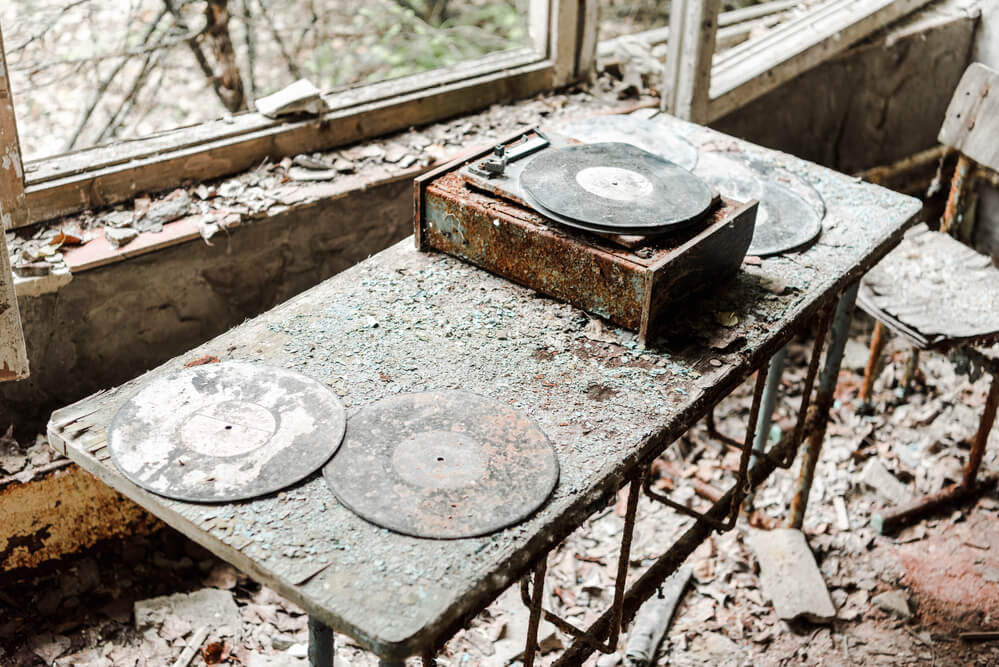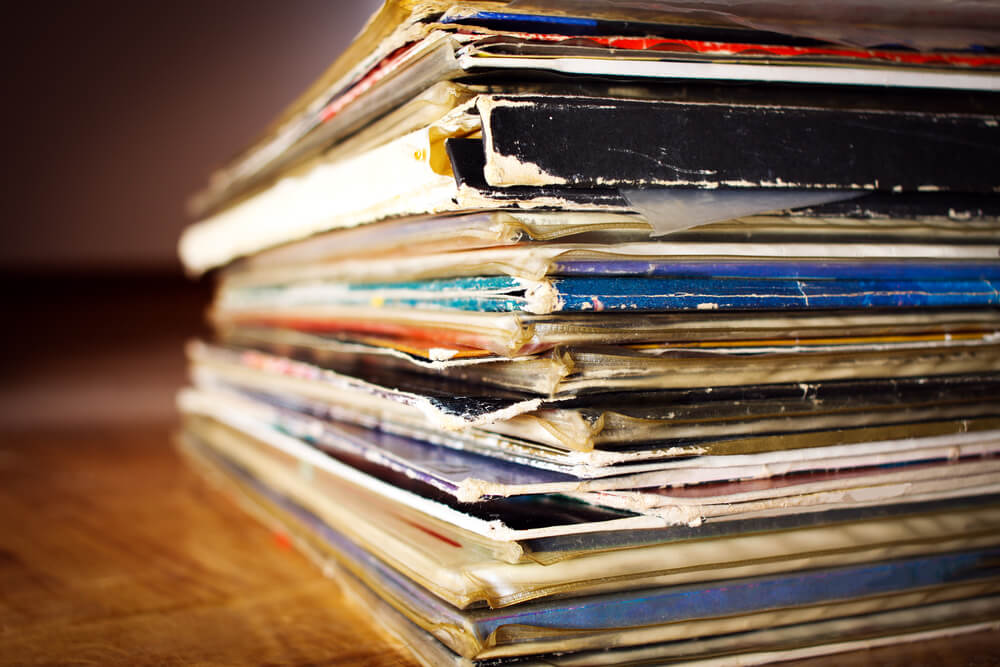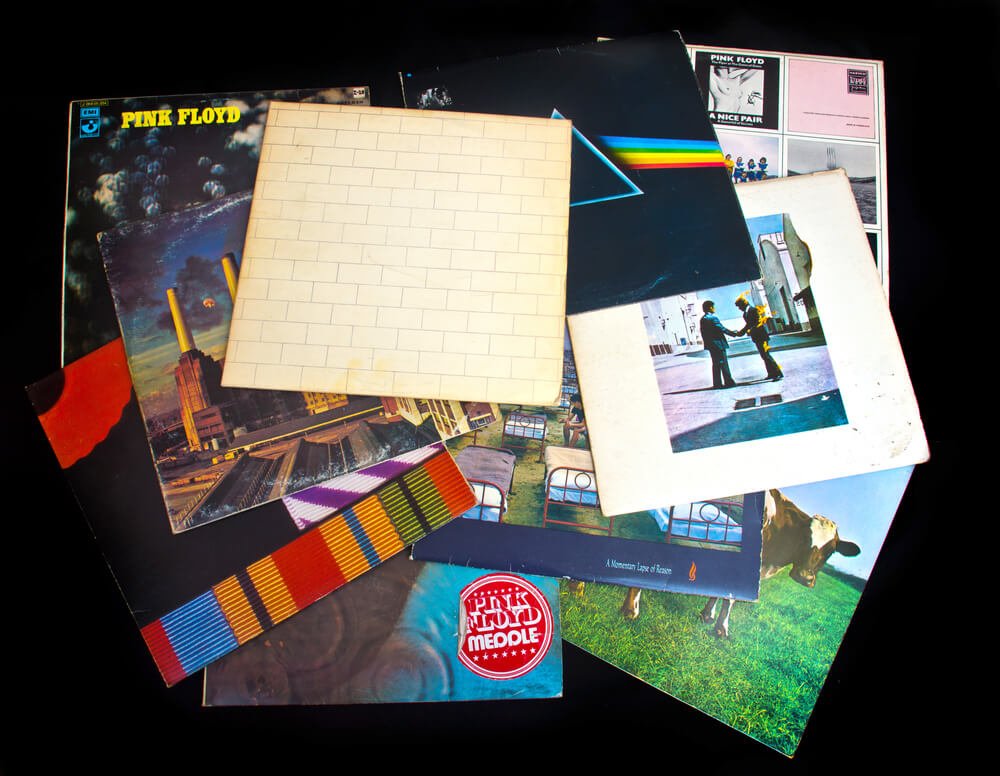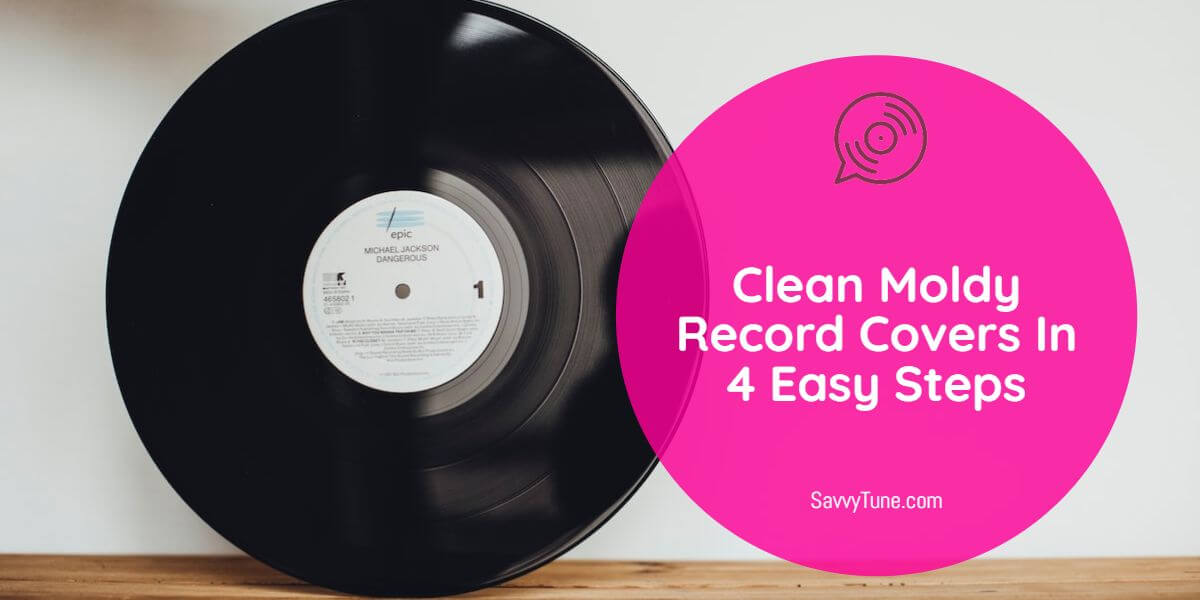As a vinyl collector, it’s safe to say that finding a record cover in pristine condition is a rare sight to see. Whether it’s cut corners, seam splits, or mold, record covers are prone to standard wear and tear over time.
When picking up your Nina Simone or Otis Redding that’s been sitting in your garage for a while, there’s a slight chance you might find mold on their covers. Fortunately, it’s nothing you can’t fix with a few simple tools!
To help you out, we’ve listed everything you need to know about how to clean moldy record covers in four easy steps. Let’s get started!

How to Clean Moldy Record Covers: The Short Version
Firstly, use a toothbrush to carefully scrub off any excess mildew from the record cover. Then, remove the mold by wiping it with disinfectant wipes or rubbing alcohol and a microfiber cloth. Finally, use a microfiber towel to dry the cover.
What Causes Mold on Record Covers?
If you have a huge record collection, you’re probably storing part of it in your garage or shed. The bad news is that this can cause the records to develop mold on them.
What exactly causes mold on your records, though?
The answer can be pretty much summed up in one word: moisture! Places like garages, sheds, and storage containers aren’t climate-controlled and will experience temperature swings.
This creates a damp environment, which leads to an excess of moisture, and before you know it, you’ve got mold all over your records.
Things You’ll Need
Before you get started, it’s important to make sure you have everything you need. Cleaning a large number of record covers is a time-consuming process as it is without having to take a few trips to the hardware store.
Below is a list of things you’ll need:
- Microfiber towel
- Toothbrush
- Disinfectant wipes
- Waterproof gloves
- Face mask
- Rubbing alcohol (optional)
- Soft cloth (optional)
How to Clean Moldy Record Covers in 4 Steps
Cleaning mold off of records and covers is a fairly simple process that anyone can do. Here are four steps to follow to help clean your record covers:
Step 1: Keep Yourself Protected
Before diving headfirst into the cleaning process, it’s always wise to make sure you’re safe. Keep in mind that mold is extremely harmful to your health and should be handled with caution. In fact, prolonged exposure to it has been linked to:
- Runny nose
- Watery eyes
- Itching
- Sneezing
- Wheezing
- Coughing
- Headache
- Shortness of breath
- Fatigue
Therefore, in order to avoid these allergy symptoms, we recommend wearing a pair of gloves and a high-quality face mask.
It’s also important for your gloves to be waterproof. We like to use latex dishwashing gloves.
Step 2: Remove the Loose Mold
With your face mask and gloves on, you’re now ready to start removing the mold. Before proceeding, make sure the album cover is completely dry. This is because moisture can easily damage it. If it’s damp, allow it to air dry or set it out in the sun to dry first.
Once your record cover is dry, begin removing the loose mold particles on it. Grab a toothbrush and gently scrub the excess mildew off your record jacket. Make sure to blow off any loose debris when you’re done.
User also read: Best ultrasonic record cleaners on the market

Step 3: Clean the Record Cover
Now that the excess mildew is removed, start wiping the album jacket. There are two methods to go about this:
Method 1: Rubbing Alcohol and a Soft Cloth
The first option is to use rubbing alcohol and a clean, soft cloth to wipe your record.
First, you need to dilute the rubbing alcohol because if it’s too strong, it may actually pull off the ink on the record cover.
- If you’re using rubbing alcohol that’s around 70%, mix three to four parts water with one part alcohol.
- If you’re using rubbing alcohol higher than 70%, mix five parts water with one part alcohol.
The next step is to dampen the soft cloth with the diluted alcohol. It’s important to use the softest cloth material possible, such as microfiber. This is because a rough cloth may be overly abrasive and may also cause irreparable damage to the cover material.
Also, the towel should be somewhat damp but not completely wet, so wring out any extra liquid before you start. Last but not least, use the damp cloth to wipe the record cover clean of any remaining dirt or mold.
Record covers are typically fragile and prone to damage, especially if they’ve been moldy for an extended period of time. So, be very careful not to apply any excess pressure when cleaning them.

Method 2: Disinfecting Wipes
As for the second option, all you need are some disinfecting wipes. The great thing about wipes is that they contain just enough alcohol to remove mildew and other debris from the album cover without removing the ink.
As with the previous approach, squeeze out any extra liquid from the wipes before cleaning the record cover. There isn’t much of a functional difference between the two approaches; choosing one just depends on personal preference and availability.
Must read: Why Is My Turntable Playing Too Slow?
Step 4: Dry the Record Cover
Now that your record cover is mold-free, it’s time to dry it. For this, you’ll need a microfiber cloth. In addition to being lint-free, these microfiber cloths are made to be extremely soft and non-abrasive.
With as little pressure as possible, gently wipe the cover down with the cloth until it’s dry, and voilà! You’re done!
How to Prevent Mold on Records
Firstly, mold is directly caused by moisture, which stems from air condensation due to lack of airflow. So, in order to keep your records and covers mold-free, you need to store them in a dry environment with enough air circulation.
Some people use dehumidifiers, whereas others use air conditioners or fans. However, if none of these are available, any airflow will suffice.
Finally, remember to clean your records and covers every now and then, or at the very least, wipe them down with a microfiber cloth every time you use them.

